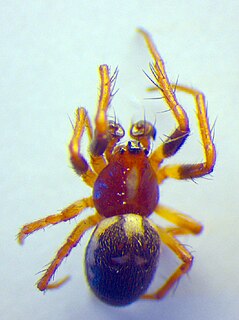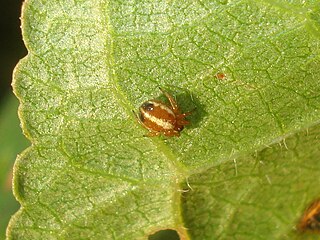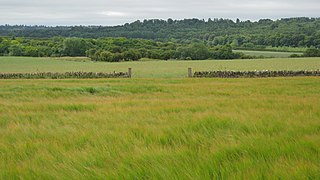
Tegenaria parietina is a rather rare spider in Europe, with a distribution also including Northern Africa to Central Asia and Sri Lanka, and from the West Indies to Uruguay and Argentina, where it may be introduced. In the UK it is sometimes known as the cardinal spider because of the legend that Cardinal Wolsey was terrified by this species at Hampton Court, or, conversely, because he regarded them as lucky and forbade anyone to harm them. In 2013, Tegenaria taprobanica was included in this species.

Uperodon taprobanicus, also known as the Sri Lankan bullfrog, Sri Lankan painted frog, Sri Lankan kaloula, Ceylon kaloula, Indian painted frog, or painted globular frog, is a species of narrow-mouthed frog found in Nepal, Bangladesh, southern and eastern India, and Sri Lanka up to an altitude of about 1300 metres. It can grow to an adult length of up to 75 millimetres(7.5 cm) long from snout to vent. It was originally described as a subspecies of Kaloula pulchra, ssp. taprobanica. The IUCN lists it as being of "Least Concern".

Hypsosinga is a genus of orb-weaver spiders first described by Anton Ausserer in 1871. The genus name is derived from the Greek "hypso", meaning "high", referring to the higher clypeus than those of the genus Singa.

Hypsosinga albovittata is an orb-weaver spider species, found in the Palearctic.

Chrysopelea taprobanica, the Sri Lankan flying snake or Indian flying snake, is a species of gliding snake distributed in India and Sri Lanka. It can glide, as with all species of its genus Chrysopelea, by stretching the body into a flattened strip using its ribs. The snake is known as "dangara dandaa - දඟරදන්ඩා" in Sinhala, due to its folding postures.
Neoheterophrictus madraspatanus is a species of spider in the family Theraphosidae, found in India.
Argiope taprobanica is a species of spider of the genus Argiope. It is endemic to Sri Lanka.
Ariadna taprobanica is a species of spider of the genus Ariadna. It is endemic to Sri Lanka.
Alistra is a genus of dwarf sheet spiders that was first described by Tamerlan Thorell in 1894.
Alistra taprobanica is a species of spider of the genus Alistra. It is endemic to Sri Lanka.
Speocera taprobanica is a species of spider of the genus Speocera. It is endemic to Sri Lanka.
Gamasomorpha taprobanica, is a species of spider of the genus Gamasomorpha. It is endemic to Sri Lanka.
Janula taprobanica, is a species of spider of the genus Janula. It is endemic to Sri Lanka.
Janula is a genus of comb-footed spiders that was first described by Embrik Strand in 1932. It is a senior synonym of Monetoculus.

Singa, also called striped orb-weavers, is a genus of orb-weaver spiders first described by C. L. Koch in 1836. They are small for orb-weavers, reaching 6 millimetres (0.24 in) or less in body length, excluding the legs.
Hypsosinga funebris is a species of orb weaver in the spider family Araneidae. It is found in the United States and Canada.

Hypsosinga pygmaea is a species of orb weaver in the spider family Araneidae. It is found in North America, Europe, Turkey, Israel, Caucasus, a range from Russia to Central Asia, China, Korea, and Japan.

Hypsosinga rubens is a species of orb weaver in the spider family Araneidae. It is found in the United States and Canada.

Reed Hill is a 14-hectare (35-acre) biological Site of Special Scientific Interest (SSSI) west of Stonesfield in Oxfordshire. It partly overlaps Stonesfield Slate Mines SSSI.







